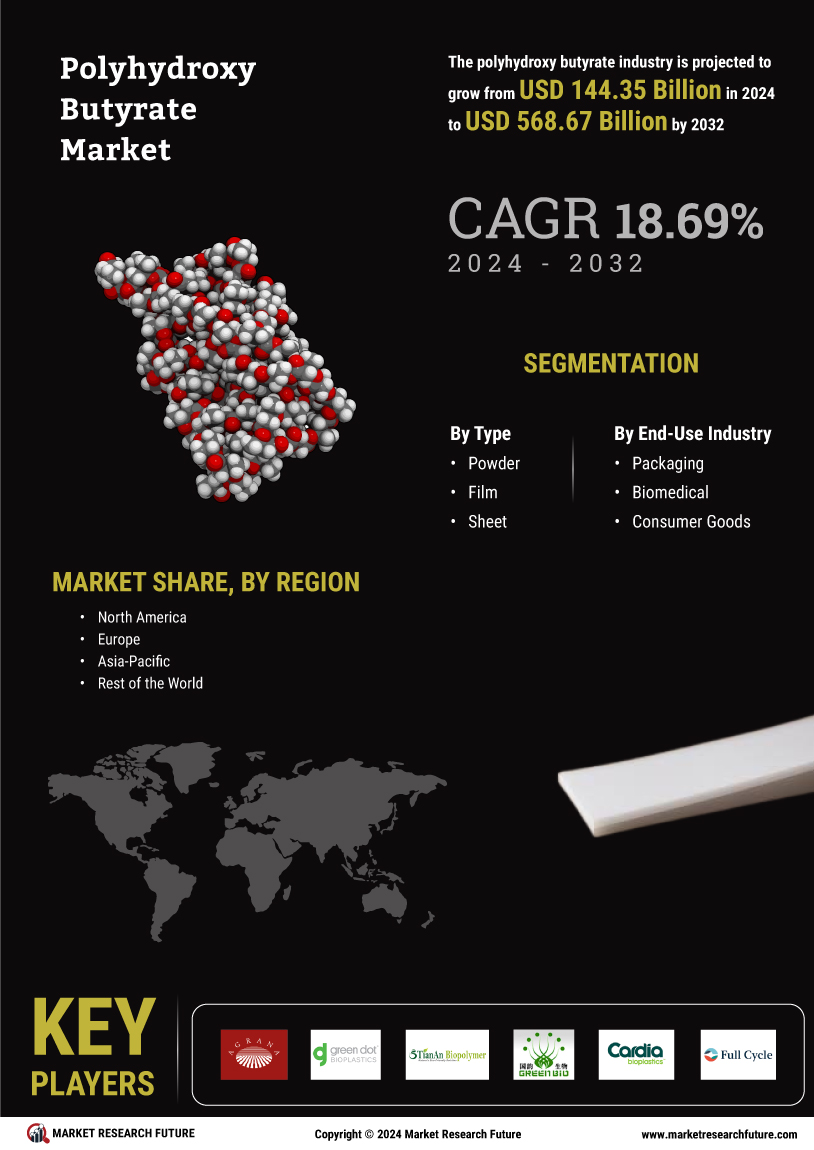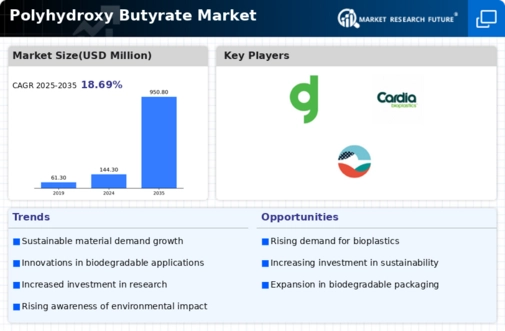Market Growth Projections
The Global Polyhydroxy Butyrate Market Industry is poised for substantial growth, with projections indicating a market value of 950.8 USD Billion by 2035. This growth trajectory is supported by a compound annual growth rate of 18.69% from 2025 to 2035. The increasing demand for sustainable materials, coupled with advancements in production technologies, is likely to drive this expansion. As industries continue to seek alternatives to traditional plastics, the market for Polyhydroxy Butyrate is expected to flourish, reflecting a broader shift towards environmentally friendly solutions.
Diverse Applications Across Industries
The versatility of Polyhydroxy Butyrate is a key driver of its market growth. This biopolymer finds applications in various sectors, including packaging, agriculture, and medical devices. The Global Polyhydroxy Butyrate Market Industry is expanding as industries recognize the benefits of using biodegradable materials. For example, in packaging, Polyhydroxy Butyrate is utilized for creating compostable films and containers. The increasing adoption of these applications is likely to contribute to the market's growth, with projections indicating a rise to 144.3 USD Billion in 2024, showcasing the material's potential across diverse sectors.
Government Initiatives and Regulations
Government policies promoting sustainable materials are pivotal in shaping the Global Polyhydroxy Butyrate Market Industry. Various countries are implementing regulations that encourage the use of biodegradable plastics to combat pollution. For instance, initiatives aimed at reducing single-use plastics are creating a favorable environment for Polyhydroxy Butyrate adoption. As these regulations become more stringent, industries are likely to pivot towards sustainable alternatives, thereby increasing the market size. The projected growth to 950.8 USD Billion by 2035 underscores the impact of these governmental measures on the industry's trajectory.
Rising Demand for Biodegradable Plastics
The increasing global emphasis on sustainability drives the demand for biodegradable plastics, including Polyhydroxy Butyrate. As environmental concerns escalate, industries are seeking alternatives to conventional plastics. The Global Polyhydroxy Butyrate Market Industry is witnessing a surge in applications across packaging, agriculture, and consumer goods. In 2024, the market is projected to reach 144.3 USD Billion, reflecting a growing preference for eco-friendly materials. This trend is likely to continue as regulatory frameworks tighten around plastic usage, further propelling the adoption of biodegradable options like Polyhydroxy Butyrate.
Technological Advancements in Production
Innovations in the production processes of Polyhydroxy Butyrate are enhancing efficiency and reducing costs. The Global Polyhydroxy Butyrate Market Industry benefits from advancements in fermentation technology and genetic engineering, which optimize the yield of this biopolymer. These technological improvements not only lower production costs but also increase the scalability of Polyhydroxy Butyrate manufacturing. As a result, the market is expected to grow significantly, with a projected CAGR of 18.69% from 2025 to 2035. This growth is indicative of the industry's potential to meet rising global demand while maintaining sustainable practices.
Growing Awareness of Environmental Impact
There is a notable increase in consumer awareness regarding the environmental impact of plastic waste. This heightened consciousness is influencing purchasing decisions, leading to a preference for products made from biodegradable materials like Polyhydroxy Butyrate. The Global Polyhydroxy Butyrate Market Industry is responding to this shift by expanding product lines that cater to eco-conscious consumers. As businesses adapt to these changing consumer preferences, the market is expected to experience robust growth. The anticipated market value of 950.8 USD Billion by 2035 reflects the significant role that consumer awareness plays in driving demand for sustainable materials.














Leave a Comment